The highest point in Maine is Mount Katahdin, which stands at an impressive height of 5,269 feet. This majestic mountain is located within the boundaries of Baxter State Park and attracts visitors from all over the world who come to admire its stunning natural beauty and explore its many trails. While there are plenty of breathtaking vistas to be found on this mountain, it’s not just the views that draw people here – there’s also a wealth of wildlife to discover.
In fact, Mount Katahdin is home to a diverse array of animals that thrive in this rugged environment. From black bears and moose to coyotes and bobcats, there’s no shortage of animals that live atop Maine’s tallest mountain. These animals have adapted over time to survive in challenging conditions where food can be scarce, and temperatures can plummet quickly.
Despite these challenges, however, they continue to thrive on Mount Katahdin and provide visitors with a unique glimpse into the natural world around them. Whether you’re an avid hiker or simply looking for a peaceful retreat in nature, Mount Katahdin offers something for everyone – including some truly awe-inspiring encounters with some of Maine’s most fascinating creatures.
30 Animals Atop Maine’s Tallest Mountain
Moose
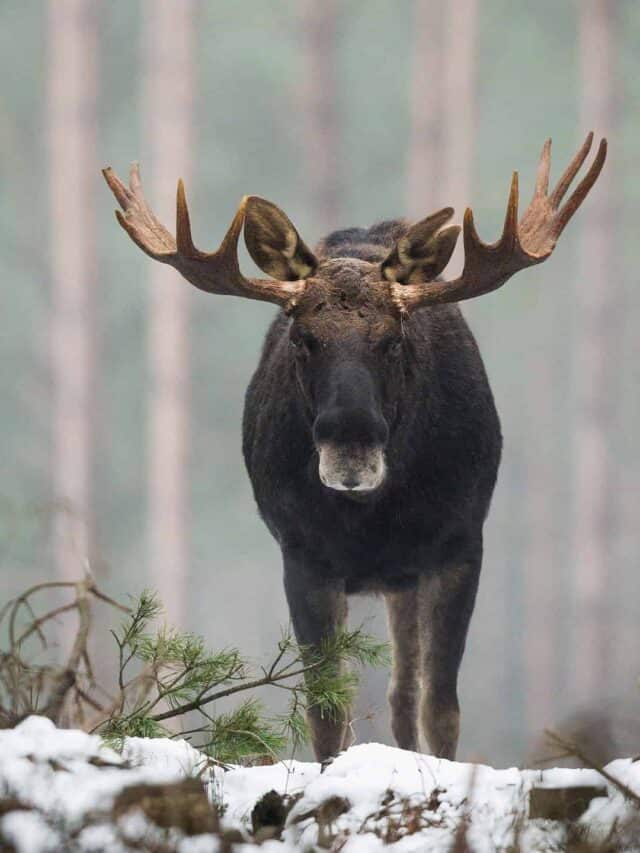
Baxter State Park is a haven for moose, as hunting is not allowed within its boundaries. Visitors looking to catch a glimpse of these majestic creatures have several options for viewing locations. Sandy Stream Pond and Stump Pond are two popular spots that offer great chances to see moose in their natural habitat. However, those seeking a more secluded experience can venture out to Tote Road or any of the other ponds in the area, such as Elbow Pond, Grassy Pond, Dwelley Pond, or Kidney Pond.
For visitors who want an even closer look at these magnificent animals, guided tours and moose safaris offered by certified Maine companies are available. It’s important to note that caution should be exercised around cow moose with calves and bull moose during mating season from mid-September to mid-October.
Moose sightings are common throughout Baxter State Park, but it’s important that visitors respect their space and follow park guidelines for wildlife viewing. With patience and luck on your side, you may just catch a rare glimpse of one of Maine’s most iconic animals in its natural environment.
Whitetail Deer
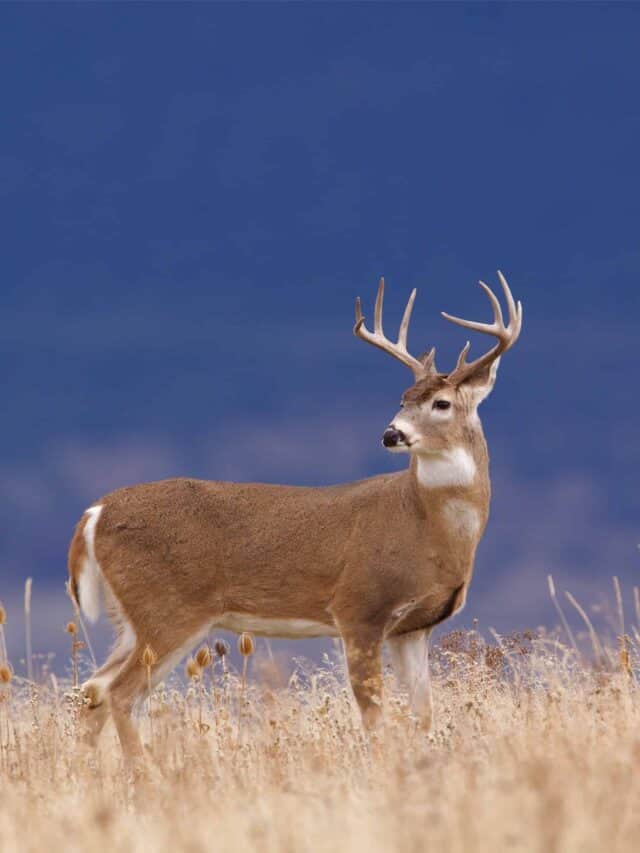
White-tailed deer are important members of Maine’s ecosystem.
©Tom Reichner/Shutterstock.com
A whitetail deer is a medium-sized mammal native to North America, known for its distinctive white tail and reddish-brown coat. They are herbivores and can be found in a variety of habitats, including forests, fields, and wetlands. Whitetail deer are an important part of many ecosystems as they help regulate plant growth through browsing and provide food for predators such as wolves and mountain lions. Despite being common throughout much of the United States, populations have declined in some areas due to habitat loss and overhunting.
Beaver

Beavers are a common animal to spot in Maine.
©Frank Fichtmueller/Shutterstock.com
Beavers are a common sight in Maine and can often be found near bodies of water such as streams, rivers, and ponds. They are known for their impressive ability to build dams using sticks, mud, and other materials. These structures help to create new habitats for other wildlife while also regulating water flow. Beavers are primarily active at night and have a reputation for being hard workers. However, they can sometimes cause problems by flooding areas that humans have developed or damaging trees with their sharp teeth. Overall, beavers play an important role in the ecosystem of Maine’s wilderness areas.
Bald Eagle
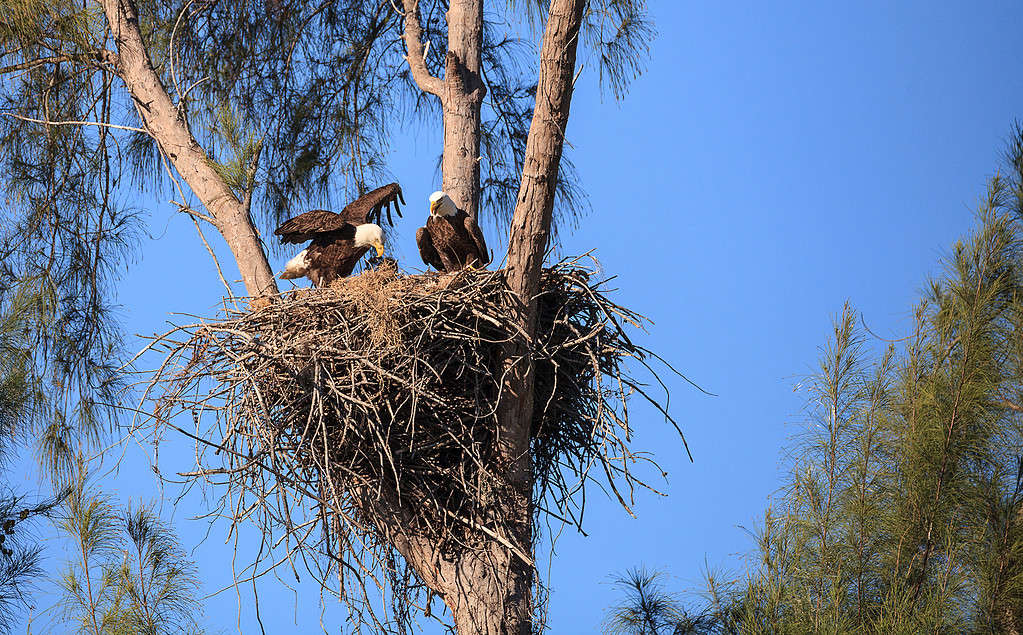
The bald eagle is making a comeback in the United States.
©iStock.com/LagunaticPhoto
In Maine, bald eagles are a common sight near the coast and inland lakes. They typically nest in tall trees or on cliffs overlooking bodies of water. Bald eagles are opportunistic hunters, consuming fish, ducks, small mammals, and carrion. These majestic birds were once endangered due to habitat destruction and hunting but have since made a remarkable recovery thanks to conservation efforts. Today, they continue to be protected under federal law as well as state regulations in Maine.
Loon
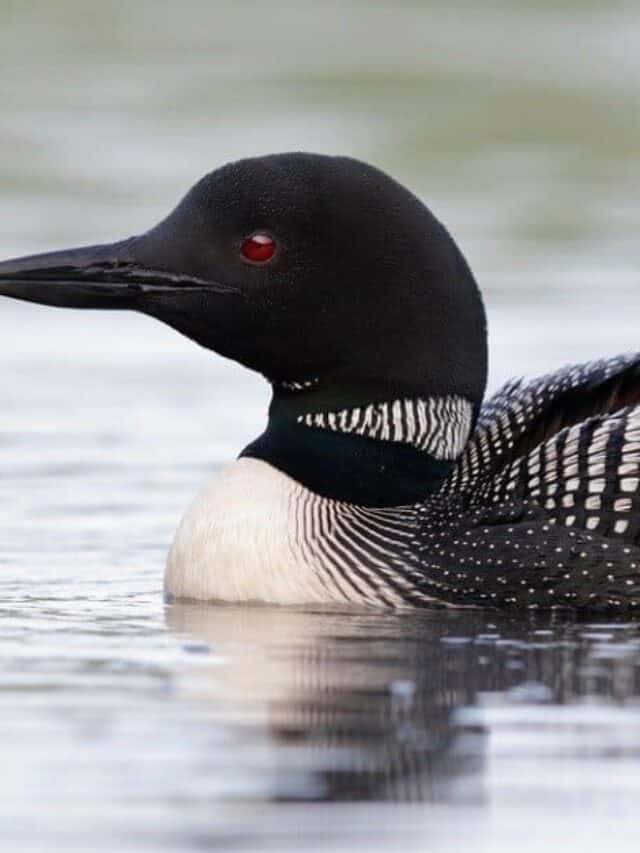
The common loon makes its home in Maine.
©iStock.com/BrianLasenby
Maine is home to several species of loons, including the common loon and the red-throated loon. These aquatic birds are known for their haunting calls and striking black-and-white plumage. Loons can be found on many of Maine’s lakes and ponds during the summer months, where they feed on fish and other small aquatic creatures. They are also a popular attraction for birdwatchers, who often venture out onto the water in kayaks or canoes to get a closer look at these beautiful birds. Despite their beauty, however, loons face a number of threats in Maine, including habitat loss due to development and pollution from pesticides and other chemicals.
Muskrat

Muskrats are rodents that love the water.
©Anton MirMar/Shutterstock.com
Muskrats are semi-aquatic rodents that can be found in various wetland habitats throughout Maine, including ponds, marshes, and streams. They are known for their distinctive scent glands, which produce a musky odor used to mark their territory. Muskrats primarily feed on aquatic vegetation but will also consume small animals such as insects and crustaceans. In Maine’s tallest mountain region, these creatures may have adapted to the colder climate by building dens with thicker walls to retain heat during winter months.
Otter
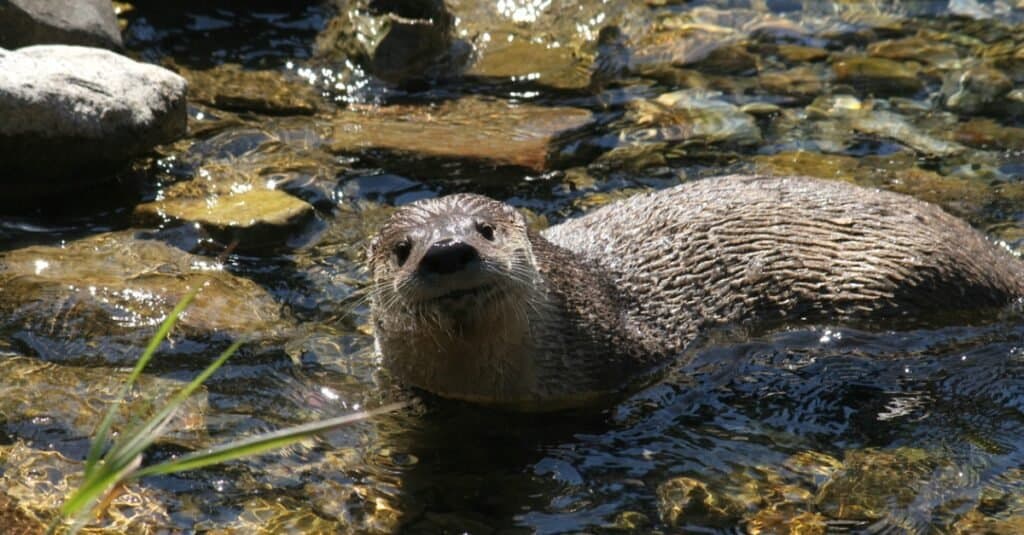
North American River Otters live in Maine.
©iStock.com/MarcQuebec
Otters are an important part of Maine’s ecosystem and can be found in various bodies of water throughout the state, including on top of Maine’s tallest mountain. These small, agile animals have a streamlined body with short legs and webbed feet that allow them to swim quickly and efficiently. Otters primarily feed on fish but will also consume other aquatic creatures, such as crayfish and mussels. They are known for their playful behavior, often seen sliding down muddy banks or playing with objects they find in the water. While otter populations were once threatened due to hunting and habitat loss, conservation efforts have helped increase their numbers in recent years.
Raccoon
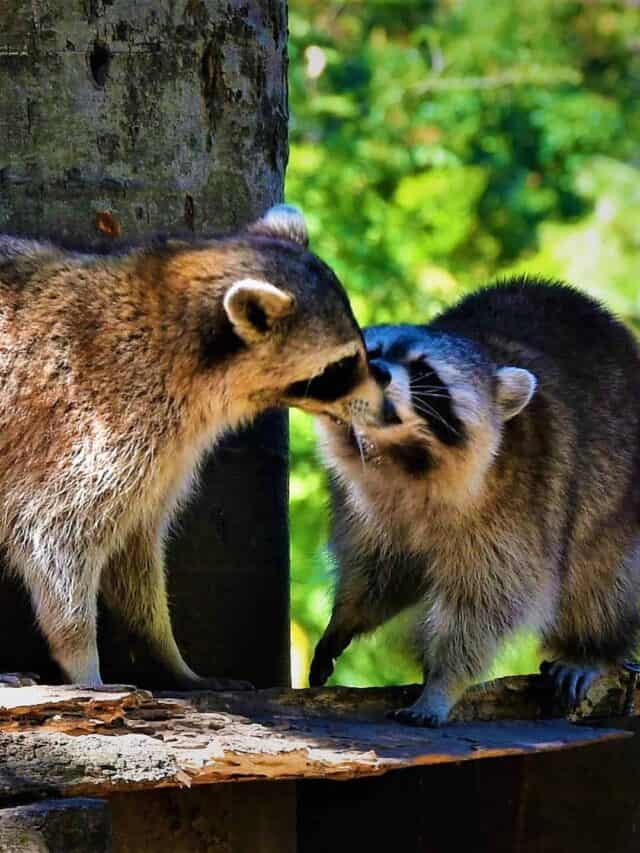
Raccoons are a common sight in Maine, including on the state’s tallest mountain. These nocturnal creatures have adapted well to urban environments and often scavenge for food in garbage cans and dumpsters. They are known for their distinct black mask around their eyes and striped tails. Raccoons can be found throughout the state, from forests to suburban areas. While they may seem cute and harmless, raccoons can carry diseases such as rabies, so it’s important to keep a safe distance if you encounter one in the wild.
Bobcat
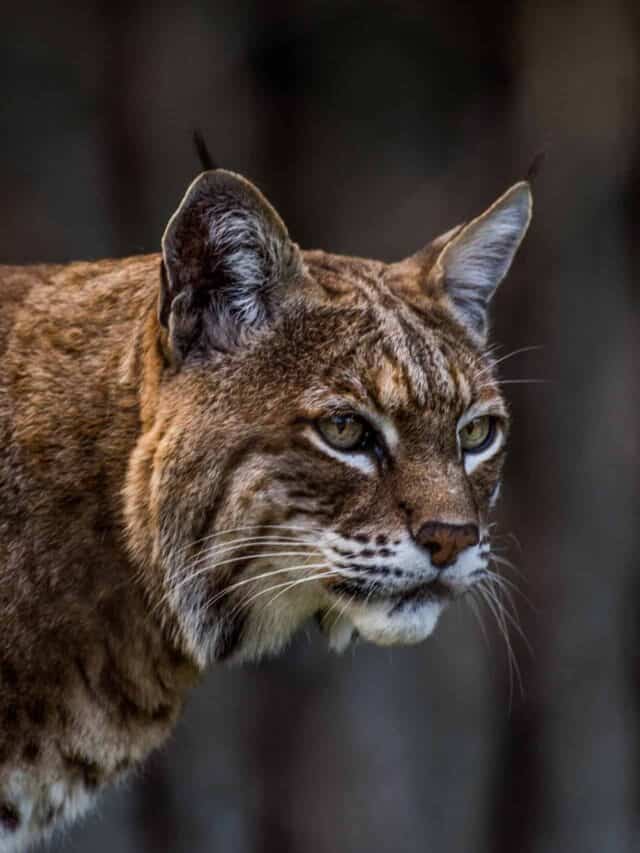
Bobcats are known for their short tails and tufted ears.
©Victor Arita/Shutterstock.com
Bobcats are a common sight in Maine, particularly in the forested areas of the state. They are known for their distinctive ear tufts and short tails, as well as their spotted coats that range from grayish-brown to reddish-brown. These elusive predators primarily hunt small mammals like rabbits and rodents but have been known to take down larger prey such as deer on occasion. While they are typically shy around humans, sightings of bobcats in suburban or urban areas have increased in recent years due to habitat loss and fragmentation.
Lynx
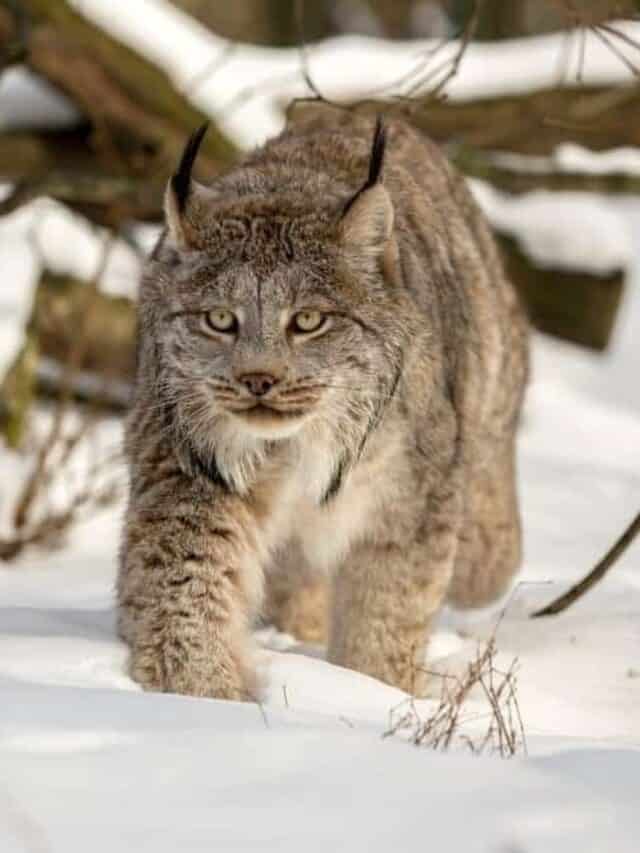
The lynx is a medium-sized wild cat that inhabits the forests of Maine, particularly in the northern part of the state. They are known for their distinctive tufted ears and short tails, as well as their impressive hunting skills. Lynx primarily feed on snowshoe hares but will also eat other small mammals like mice and squirrels. Despite being elusive creatures, visitors to Maine’s tallest mountain may be lucky enough to spot one of these beautiful animals prowling through the woods. However, it is important to remember that lynx are protected by law in Maine and should not be disturbed or approached if encountered in the wild.
Red Fox
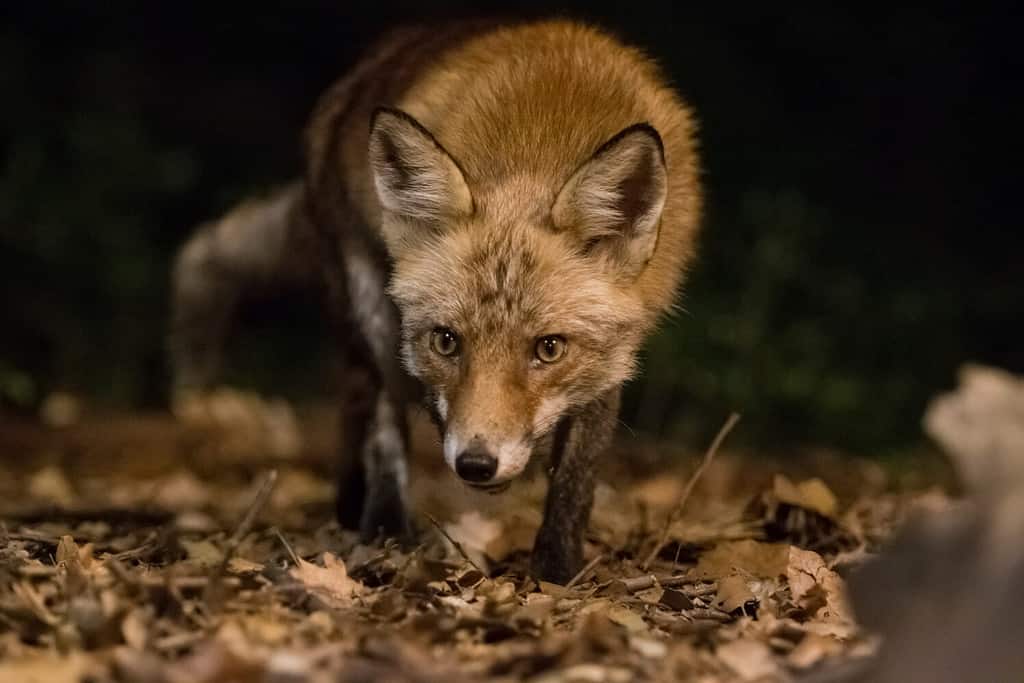
Red foxes mostly come out at dawn and dusk to hunt.
©Daniel Rodriguez Garriga/Shutterstock.com
Red foxes are a common sight in Maine, including one of the animals atop the state’s tallest mountain, Mount Katahdin. These small carnivores are known for their reddish-orange fur and distinctive bushy tails. They’re adaptable creatures that can thrive in both rural and urban environments, and they’re skilled hunters who prey on everything from rodents to rabbits to birds. While red fox populations have declined in some parts of the country due to habitat loss and other factors, they remain relatively abundant in Maine thanks to the state’s large tracts of undeveloped land.
Eastern Coyote
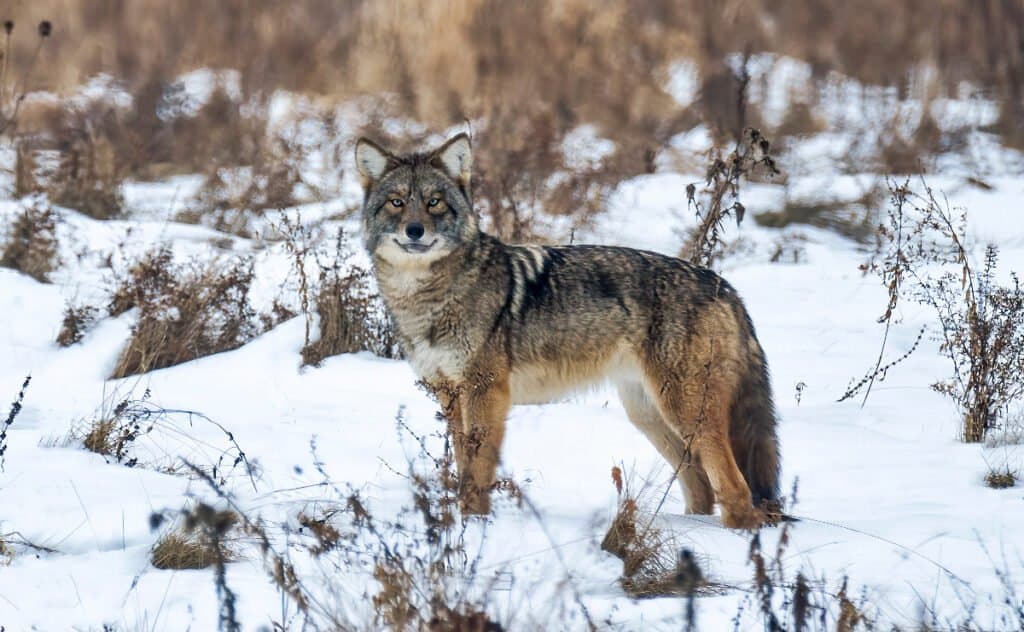
Coywolf, or eastern coyotes, are found in Maine.
©Fiona M. Donnelly/Shutterstock.com
Eastern coyotes, also known as coywolves, are a unique hybrid species found in Maine and other parts of the Northeastern United States. They are larger than their western counterparts and have a mix of wolf, coyote, and domestic dog DNA in their genetic makeup. Eastern coyotes are highly adaptable predators that can hunt a variety of prey ranging from small rodents to deer. They often live in family groups and have been known to vocalize with each other using howls and yips. While they may be misunderstood by some due to their wild nature, eastern coyotes play an important role in maintaining an ecological balance within Maine’s diverse ecosystem.
Fisher
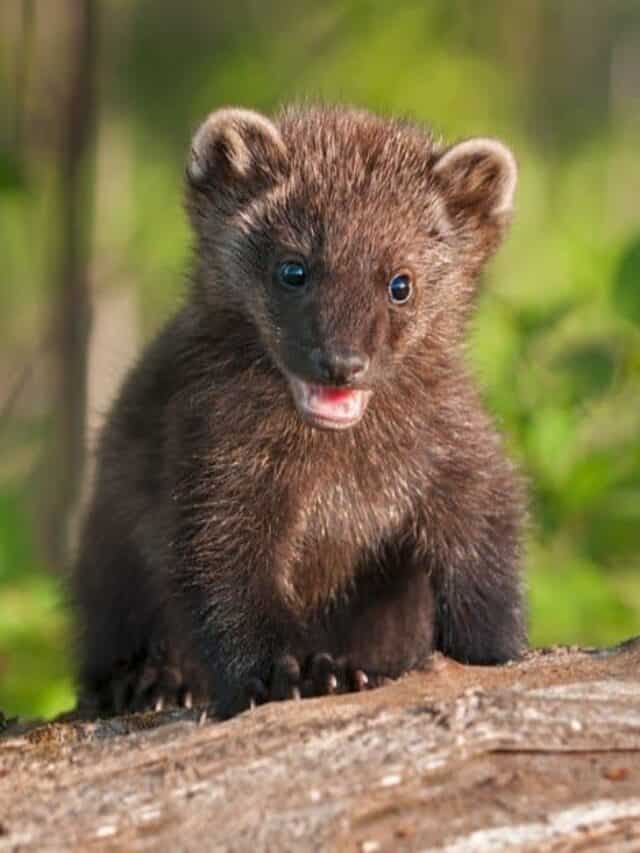
Fishers are sneaky and hard to spot.
©Holly Kuchera/Shutterstock.com
Fisher, also known as Pekania pennanti, is a species of mustelid native to North America. In Maine, fishers are one of the animals living atop the state’s tallest mountain peaks. These elusive creatures are primarily solitary and semi-arboreal in nature, meaning they spend most of their time on trees or rocky outcrops. Fishers have a dark brown fur coat with lighter underparts and distinctive facial markings that include white patches around their eyes and mouth. These carnivorous animals have powerful jaws designed for hunting prey, such as rodents, rabbits, porcupines, and even deer fawns. Despite being skilled hunters themselves, fishers may fall prey to larger predators like coyotes or bobcats.
Marten

Martens are small carnivores that belong to the weasel family.
©David OBrien/Shutterstock.com
Martens are small carnivorous mammals that belong to the weasel family. They have long, slender bodies and bushy tails, making them agile climbers in Maine’s dense forests. Martens typically range from brown to dark black in color and can grow up to 2 feet in length. While they were once hunted for their fur, martens are now a protected species in Maine due to habitat loss and trapping restrictions. Despite their elusive nature, visitors may be able to catch a glimpse of these fascinating animals on top of Maine’s tallest mountain during certain times of the year.
Weasel

Weasels live and hunt atop Maine’s tallest mountain.
©Ghost Bear/Shutterstock.com
Weasels are a common sight in Maine, especially atop the state’s tallest mountain. These small and agile predators belong to the Mustelidae family and have long, slender bodies that allow them to easily maneuver through tight spaces. Their brown or reddish-brown fur helps them blend into their surroundings as they hunt for rodents, rabbits, and other small prey. Despite their size, weasels are fierce hunters known for their speed and agility. They also have a reputation for being notoriously difficult to spot due to their secretive nature.
Snowshoe Hare
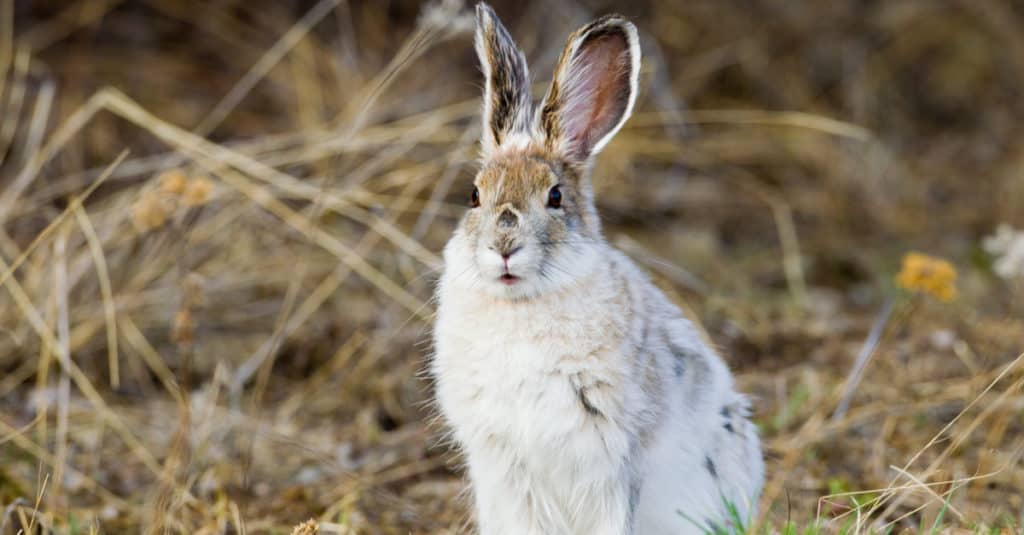
Snowshoe Hares are experts at changing direction while running at top speed.
©Jukka Jantunen/Shutterstock.com
Snowshoe hares are a common sight in Maine. They are one of the animals that love the snow on Maine’s tallest mountain. These small mammals have adapted to life in snowy environments by growing larger feet and changing color to match their surroundings with the seasons. During winter, they sport white fur that blends into the snow; during summer, they turn brown to blend into the foliage. Snowshoe hares are herbivores and feed on plants such as tree bark, twigs, and buds. They are an important part of the food chain for predators like lynx and bobcats.
Porcupine

Porcupines are nocturnal. It is not very common to spot one.
©Structured Vision/Shutterstock.com
Porcupines are a common sight in the state of Maine, particularly on Mount Katahdin, the tallest mountain in the region. These nocturnal creatures typically weigh between 10-35 pounds and have sharp quills that they use for self-defense. They primarily feed on tree bark and can cause damage to forests if their population grows too large. Despite their prickly exterior, porcupines are known to be docile animals and tend to avoid human interaction whenever possible.
Red Squirrel
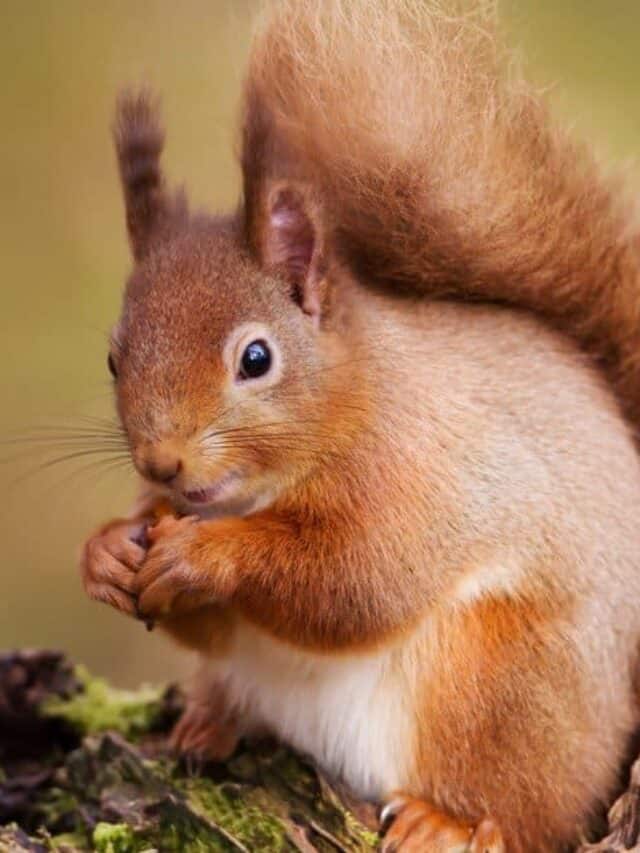
Red Squirrels are abundant in the forests and mountains of Maine.
©Giedriius/Shutterstock.com
Red squirrels in Maine are small, territorial creatures that can be found throughout the state’s forests. They are known for their reddish-brown fur and bushy tails, which they use to communicate with other squirrels. Red squirrels are also skilled at gathering and storing food, especially during the winter months when food is scarce. While they may seem cute and harmless, red squirrels can be quite aggressive when defending their territory or searching for food. Despite this behavior, many Mainers appreciate these furry little critters as a beloved part of their natural landscape.
Chipmunk
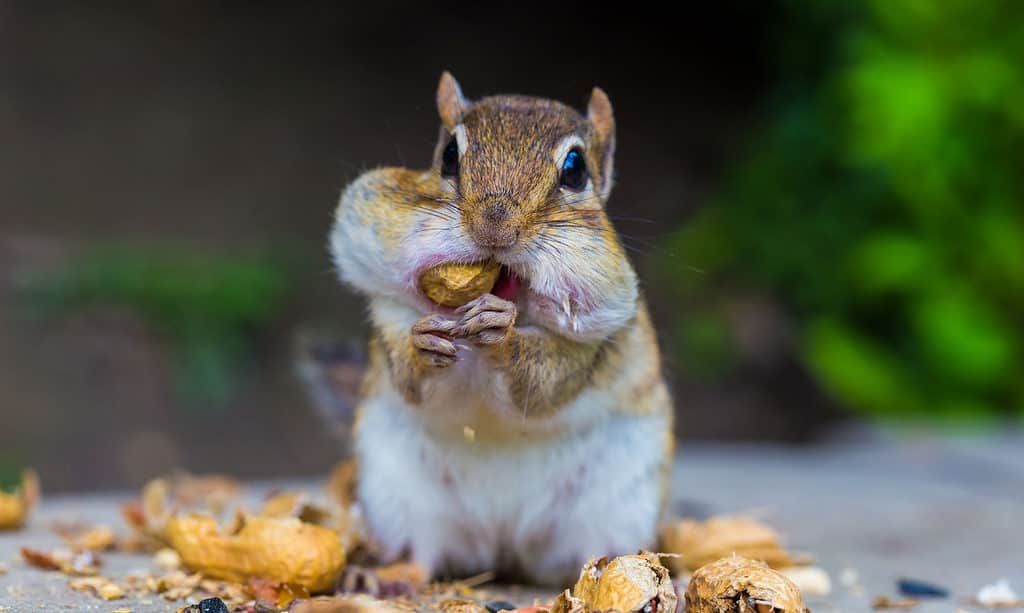
Chipmunks have large cheek pouches to help them carry food.
©colacat/Shutterstock.com
Chipmunks are small, ground-dwelling rodents that can be found throughout Maine, including on the state’s tallest mountain peaks. These cute creatures are known for their striped fur and bushy tails. They often reside in burrows or nests made of leaves and twigs, where they store food such as nuts and seeds to sustain them through the winter months. Despite their diminutive size, chipmunks play an important role in Maine’s ecosystem by helping to disperse seeds and providing a source of prey for larger animals like hawks and foxes.
Hawk
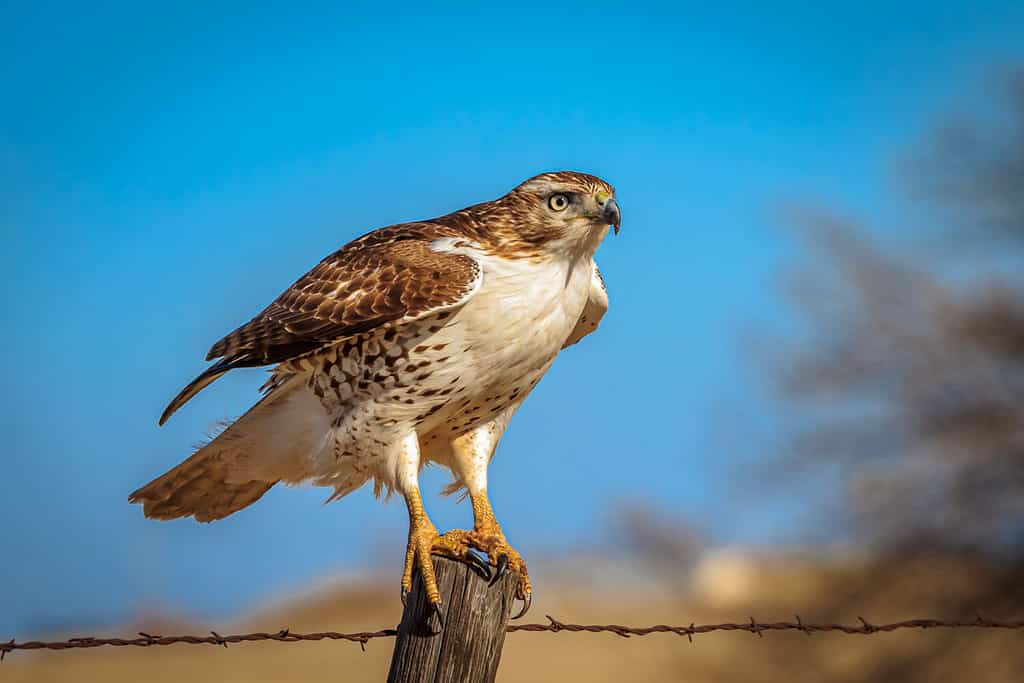
Red-tailed hawks are birds of prey.
©Richard G Smith/Shutterstock.com
Hawks are a common sight in Maine, especially on the state’s tallest mountain. Known for their sharp eyesight and powerful talons, these birds of prey can often be seen soaring overhead or perched atop trees scanning the ground below for potential prey. In Maine, hawks are particularly important predators as they help maintain balance within ecosystems by keeping rodent populations in check. Despite being one of the most widespread birds of prey in North America, hawks face threats from habitat loss and human activities such as hunting and pesticide use.
Osprey

Osprey usually lives near water because they primarily eat fish.
©Gregory Johnston/Shutterstock.com
Ospreys are a common sight in Maine, particularly near the state’s tallest mountain. These birds of prey have distinctive brown and white feathers and a wingspan of up to six feet. They feed primarily on fish, diving into bodies of water to catch their meals with sharp talons. Ospreys typically mate for life and return to the same nesting site each year, building large stick nests atop tall trees or structures such as telephone poles. Despite facing threats from habitat loss and pollution, osprey populations in Maine have rebounded thanks to conservation efforts aimed at protecting these impressive predators.
Kingfisher

Belted kingfishers live near bodies of water in Maine.
©Harry Collins Photography/Shutterstock.com
Kingfishers in Maine are a common sight, especially near bodies of water such as rivers and lakes. These birds are known for their distinctive blue-gray feathers, crested heads, and long pointed bills which they use to catch fish by diving into the water from perches above. The Belted Kingfisher is the most commonly seen species in Maine, but other types, including Green and Pied, can also be spotted. Despite their name, kingfishers actually eat a variety of small prey beyond just fish, including insects, crustaceans, and amphibians.
White-throated Sparrow
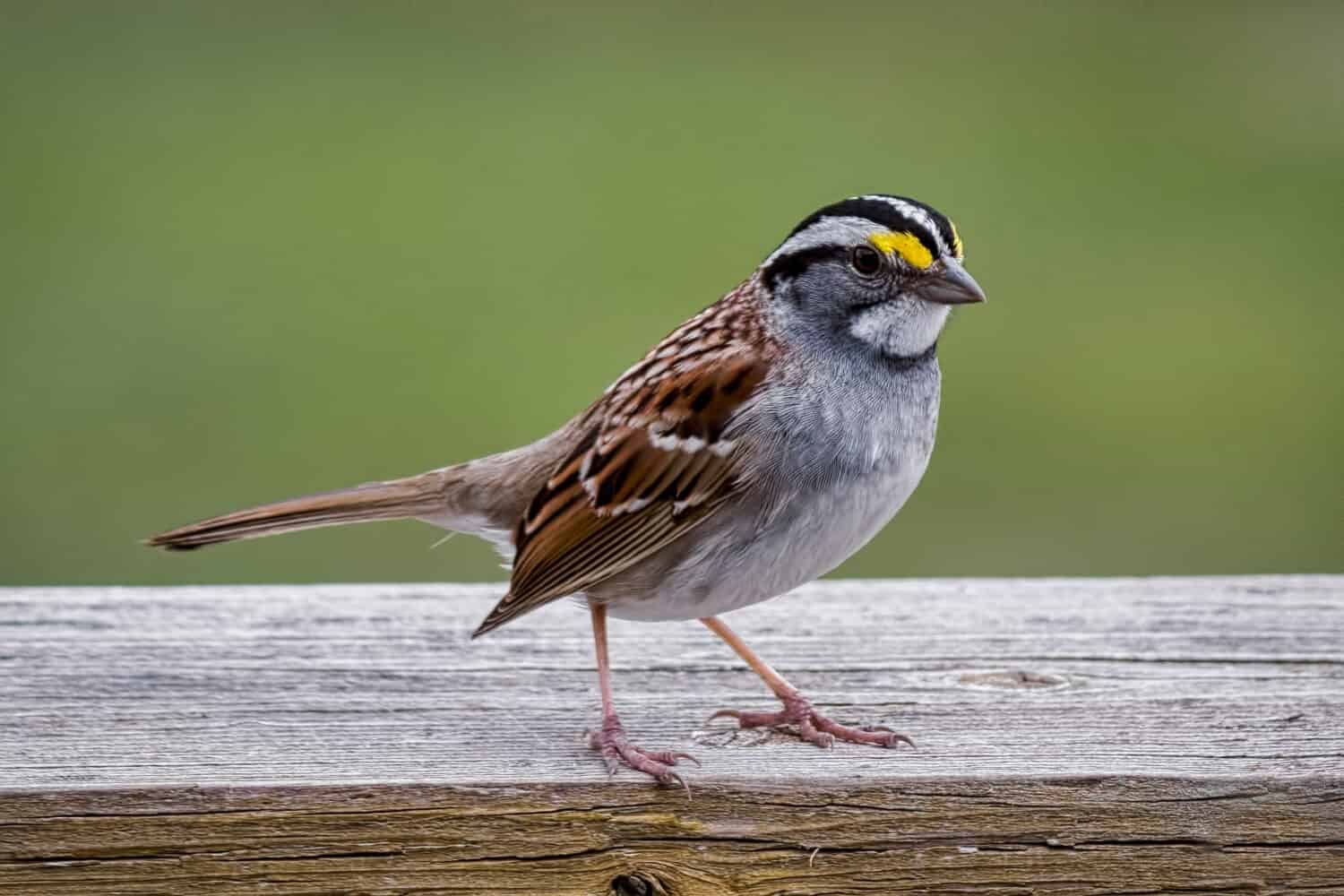
White-throated sparrows have lovely black and yellow head markings.
©Fiona M. Donnelly/Shutterstock.com
The white-throated sparrow is a small songbird that can be found in the forests of North America. These birds are easily recognizable by their distinctive markings, which include a white throat and striped head. They feed on insects, seeds, and berries and are known for their beautiful songs that can often be heard echoing through the trees. The white-throated sparrow is a common sight atop Maine’s tallest mountain and adds to the diverse array of wildlife that calls this area home.
Cedar Waxwing
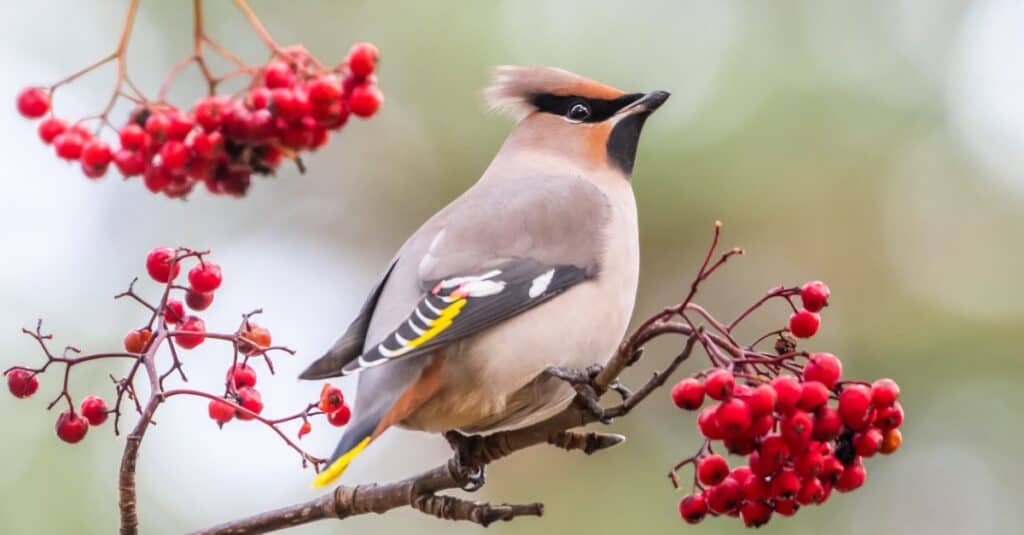
The silky sheen of the feathers set the cedar waxwing apart from other brown birds.
©iStock.com/hannurama
The cedar waxwing is a beautiful bird species that can be found in North America. It has a distinctive appearance, with soft brown and gray feathers, a black mask on its face, and bright red tips on its wings. The bird’s diet primarily consists of fruits, especially berries such as juniper, mulberry, and serviceberry. Cedar waxwings are social birds that often travel in large flocks during the winter months. They are also known for their high-pitched trilling calls, which add to their unique charm.
Black-throated Blue Warbler

Black-throated blue warblers sing a beautiful song.
©iStock.com/BrianLasenby
The black-throated blue warbler is a small songbird that is native to eastern North America, including Maine’s tallest mountain. As its name suggests, the male has a striking black throat and blue upper parts, while the female is more muted in color with grayish-blue upper parts and a pale yellow throat. These birds are known for their musical songs and can often be heard singing from high up in the trees. They primarily feed on insects and spiders and are an important part of the forest ecosystem.
Blue-headed Vireo
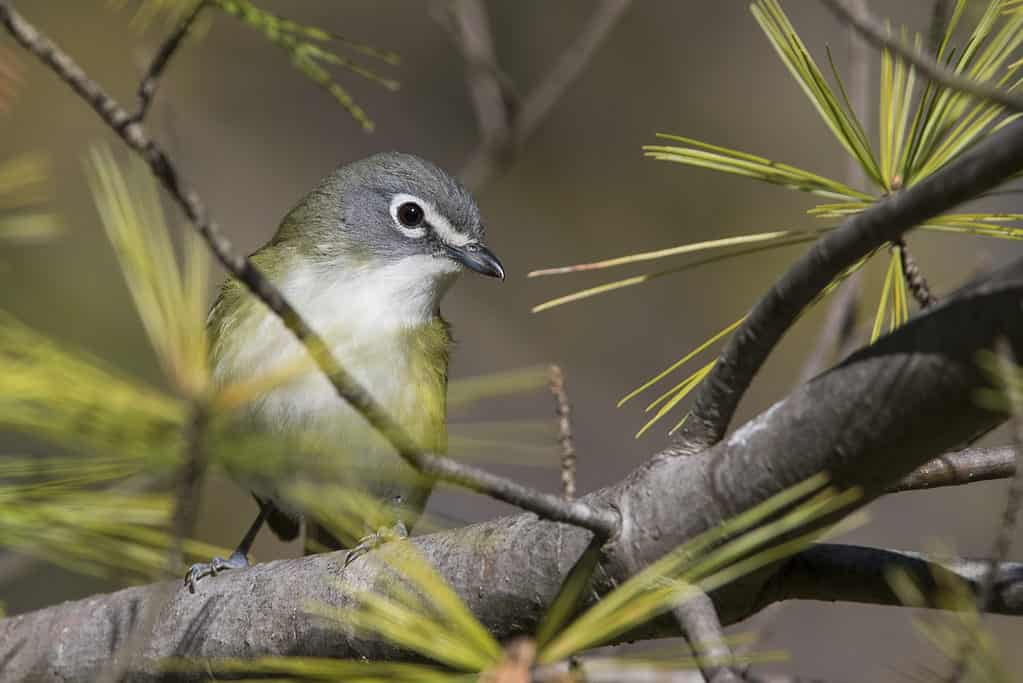
Blue-headed vireos have lovely colored plumage.
©iStock.com/mirceax
The blue-headed vireo is a small, colorful bird that resides in the forests of Maine’s tallest mountain ranges. With its distinctive blue head and olive-green body, this songbird can often be heard singing high-pitched melodies throughout the summer months. The blue-headed vireo primarily feeds on insects and spiders but also enjoys berries and fruit during migration season. While populations have declined in some areas due to habitat loss, conservation efforts are being made to protect this charismatic species for generations to come.
Palm Warbler

Palm warblers sing beautiful songs in the spring.
©iStock.com/GummyBone
The palm warbler is a small songbird that can be found in various habitats across North America, including Maine’s tallest mountain. Known for their distinctive tail wagging and ground-foraging behavior, these birds have a brownish-olive back and yellow underparts with streaking on the breast. During the breeding season, males will display brighter yellow plumage to attract mates. The palm warbler primarily feeds on insects but will also consume berries and seeds during migration periods. Their unique appearance and behavior make them a fascinating addition to any birdwatcher’s checklist when visiting Maine’s mountainous regions.
Yellow-Bellied Sapsucker

Yellow-belly sapsuckers are omnivores, and like their namesake, sapsuckers eat, live, and breathe sap.
©Glass and Nature/Shutterstock.com
The yellow-bellied sapsucker is a small to medium-sized woodpecker that can be found in the forests of Maine’s tallest mountain. This bird has distinctive black and white plumage with a bright red cap on its head. As its name suggests, the yellow-bellied sapsucker feeds primarily on sap from trees, using its sharp beak to drill holes in the bark and then lapping up the sweet liquid that flows out. It also eats insects and fruits and can often be seen clinging vertically to tree trunks or branches while searching for food. The yellow-bellied sapsucker plays an important role in forest ecosystems by creating openings in trees that other animals can use for shelter or nesting sites.
Pileated Woodpecker
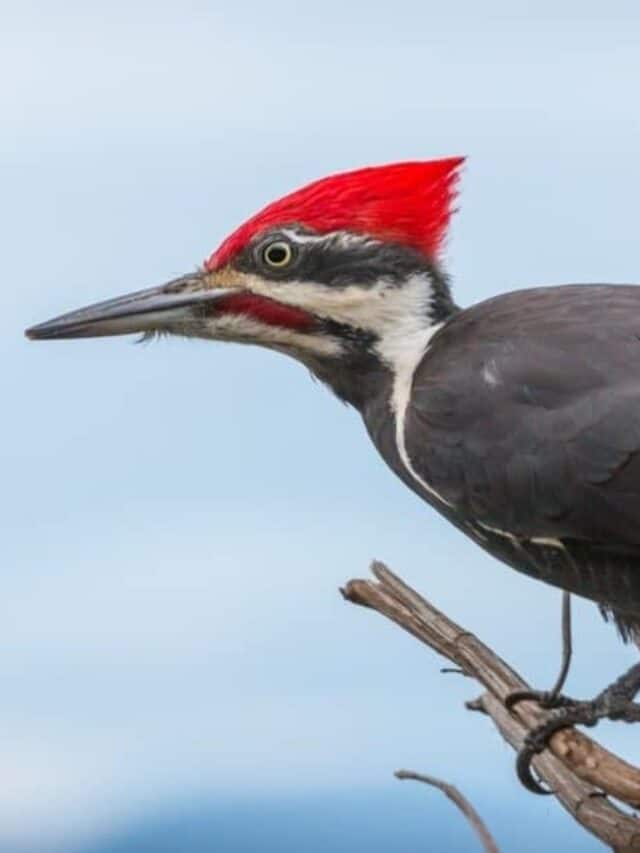
Pileated woodpeckers can be found in the forests atop Maine’s tallest mountain.
©rhfletcher/Shutterstock.com
The pileated woodpecker is a striking bird with a black body and white stripes on its face. It’s the largest woodpecker in North America, measuring around 16 to 19 inches long. Known for their loud drumming sounds as they peck at trees, these birds have strong beaks that allow them to dig deep into the bark to find insects or excavate nests in dead trees. They prefer large tracts of mature forest habitat and are often found in areas with standing deadwood.
Black-Backed Woodpecker
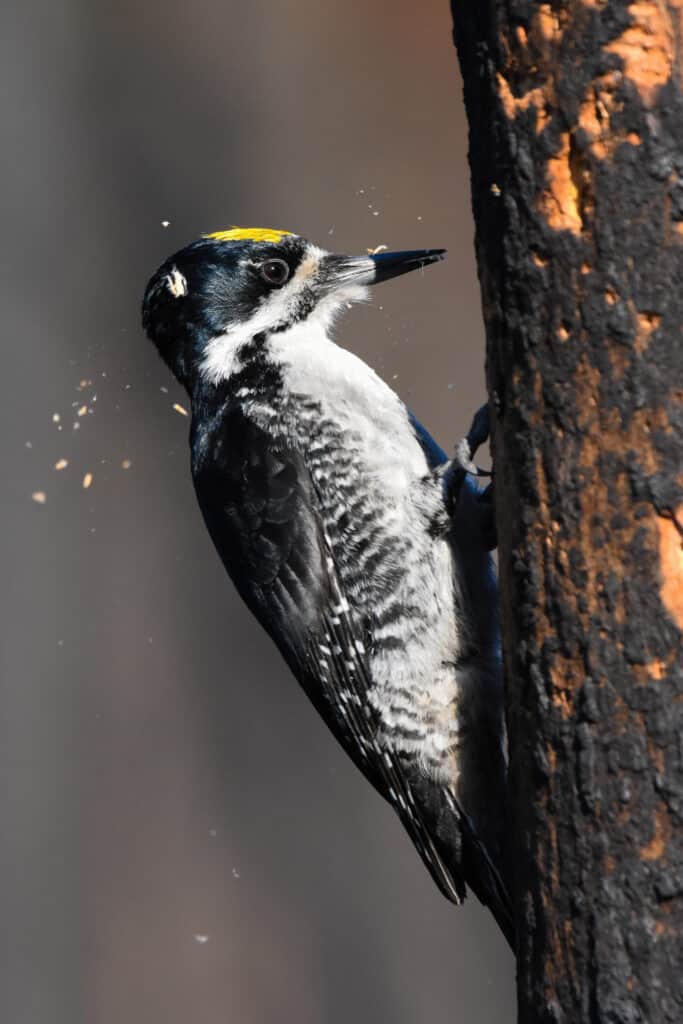
Black-backed woodpeckers are common in Maine.
©Carrie Olson/Shutterstock.com
The black-backed woodpecker is a species of woodpecker that is commonly found in coniferous forests. They are known for their distinctive appearance, which includes a black back and white stripes on their wings. These birds are also known for their unique feeding habits, as they primarily feed on insects that live under the bark of dead trees. The habitat destruction caused by human activities has had a negative impact on the black-backed woodpecker population, making conservation efforts crucial to protecting these fascinating birds.
Maine Brook Trout

Maine brook trout have white leading edges on their fins.
©K Steve Cope/Shutterstock.com
The Maine brook trout is a type of fish that can be found in the cold, clear streams and lakes throughout Maine’s mountainous regions. This species is known for its vibrant colors, including dark green backs with red spots and pale bellies. The average size of this fish ranges from 6 to 10 inches, though some can grow up to 20 inches. Brook trout are highly valued by anglers for their challenging nature and delicious taste. However, they require clean water sources and proper management to thrive in their natural habitats.
Summary of 30 Animals Atop Maine’s Tallest Mountain
| Number | Animal |
|---|---|
| 1 | Moose |
| 2 | Whitetail Deer |
| 3 | Beaver |
| 4 | Bald Eagle |
| 5 | Loon |
| 6 | Muskrat |
| 7 | Otter |
| 8 | Raccoon |
| 9 | Bobcat |
| 10 | Red Fox |
| 11 | Eastern Coyote |
| 12 | Fisher |
| 13 | Marten |
| 14 | Weasel |
| 15 | Sowshoe Hare |
| 16 | Porcupine |
| 17 | Red Squirrel |
| 18 | Chipmunk |
| 19 | Hawk |
| 20 | Osprey |
| 21 | Kingfisher |
| 22 | White-throated Sparrow |
| 23 | Cedar Waxwing |
| 24 | Black-throated Blue Warbler |
| 25 | Blue-headed Vireo |
| 26 | Palm Warbler |
| 27 | Yellow-bellied Sapsucker |
| 28 | Pileated Woodpecker |
| 29 | Black-Backed Woodpecker |
| 30 | Maine Brooke Trout |
The photo featured at the top of this post is © iStock.com/Dylan Brett
Thank you for reading! Have some feedback for us? Contact the AZ Animals editorial team.






